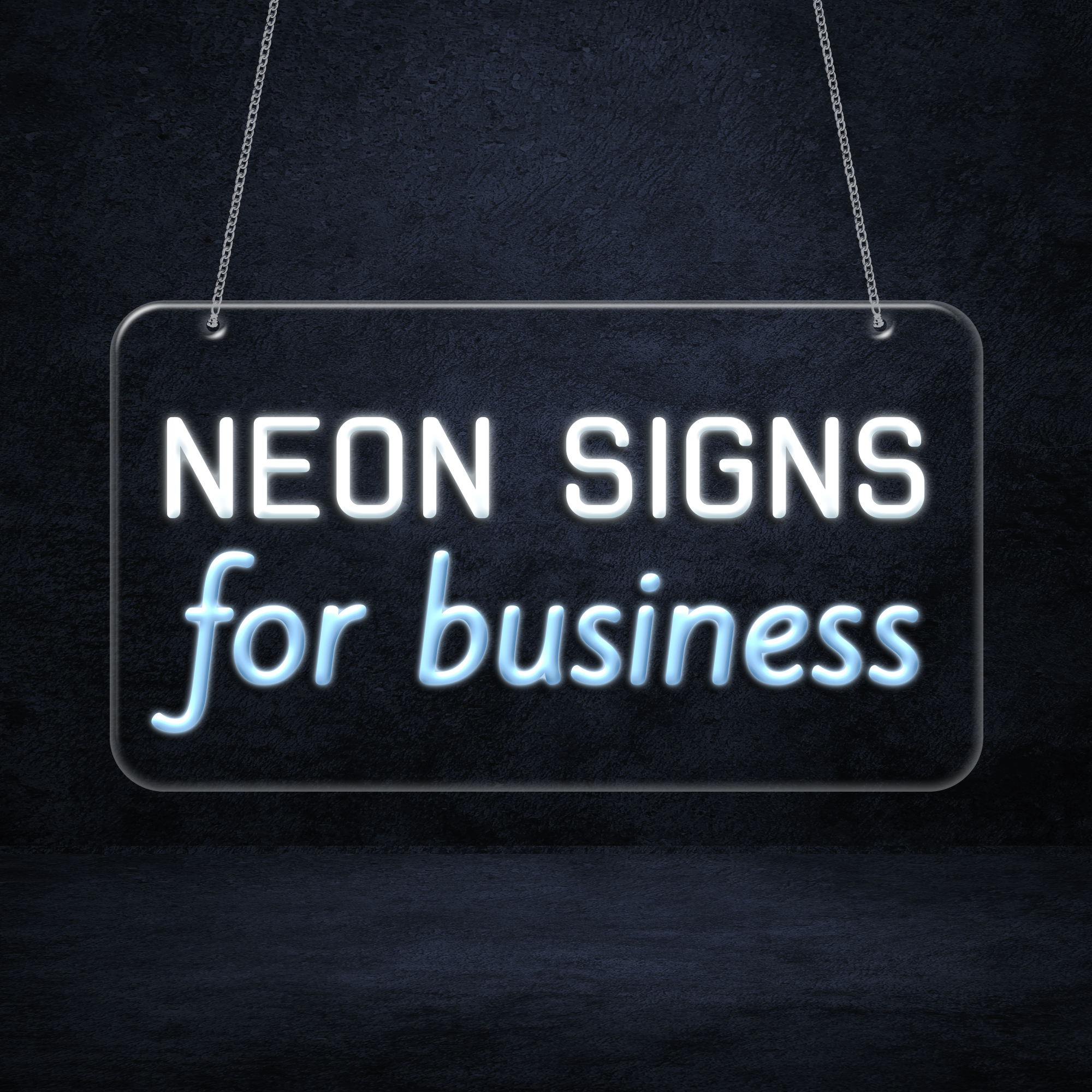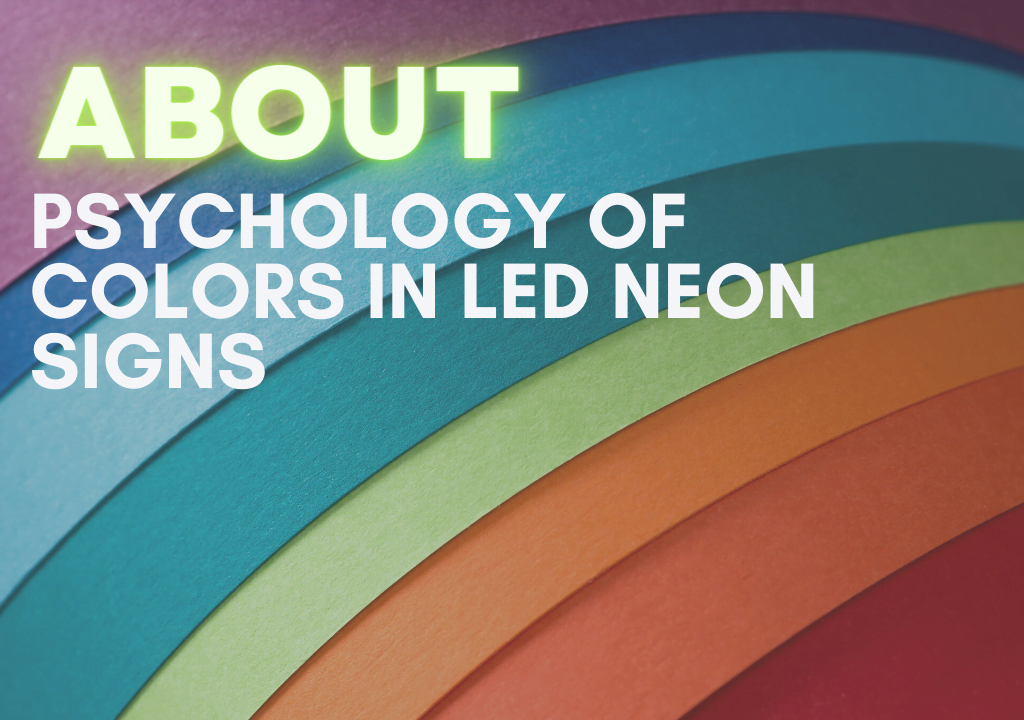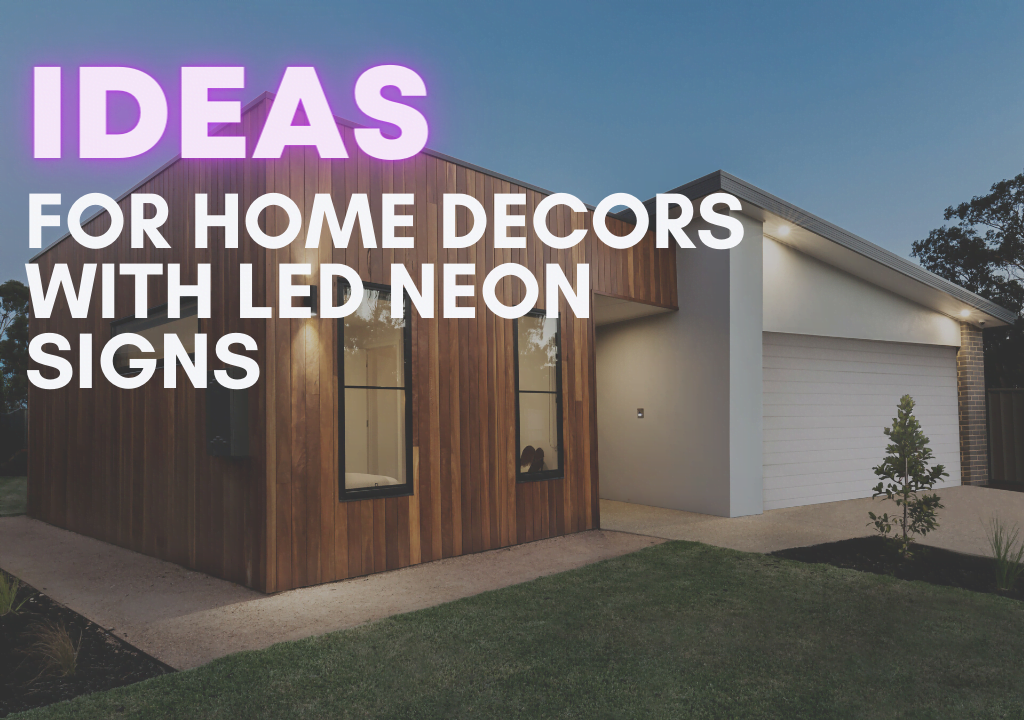Colors are not merely decorative; they also wield a profound influence on our emotions and behaviors. In LED neon signs, the impact of color psychology can be immense, guiding perceptions and enhancing the message. Let’s delve into the fascinating world of color psychology and see how different colors in LED neon signs can evoke different feelings and reactions.
The Science of Color Psychology
Color psychology of color is the study of how colors affect human behavior, emotions, and mental processes. It’s based on the idea that colors can elicit specific responses from the human brain and influence mood, decision-making, and memory.
In the context of neon signs, color psychology of color plays an essential role in creating a sign that stands out, communicates a message, and drives action. The right color can make a sign more visible, memorable, and persuasive, while the wrong color can lead to confusion, apathy, or even repulsion.
Understanding the psychology of color can help designers choose the right colors for a neon sign, based on the audience, message, and context. It can also help businesses and marketers create effective marketing strategies that leverage the power of color to influence consumer behavior.
The Impact of Color on Emotions and Associations
One of the key ways colors impact human behavior is by evoking emotions and associations. Different colors can elicit different emotions and associations, depending on cultural background, personal experience, and context. Here are some common associations and emotions associated with different colors:
Red
Red is a popular color choice for neon signs because it’s attention-grabbing and creates a sense of urgency. This color is often used in signs for sales, discounts, and promotions to create urgency. Entertainment, hospitality, and nightlife industries choose red for its association with excitement, passion, and intensity. However, too much red can be overwhelming and convey aggression or danger. So, use it in moderation.
Yellow
Yellow is another high-visibility color that can attract attention and convey warmth and friendliness. Neon signs often utilize yellow for fast food restaurants, gas stations, and other businesses that aim to stimulate urgency and impulse buying. Moreover, yellow can also represent caution or warning, which is suitable for safety signs or construction zones.
Blue
Blue is a popular color for LED neon signs because it’s calming, soothing, and evokes a sense of trust and reliability. Businesses that want to convey stability and professionalism often use blue in their neon signs, such as banks and insurance companies. Blue is also associated with technology and innovation, making it fitting for signs of tech startups or gadget stores.
Green
Green is a versatile color that can convey different meanings depending on the shade and context. Eco-friendly businesses or health food stores often use light green in their neon signs, as it is associated with nature, growth, and harmony. Meanwhile, luxury brands or financial institutions opt for dark green as it is associated with wealth, money, and prestige. Green is also a good choice for signs that want to convey a sense of calm or relaxation, such as spas or yoga studios.
Orange
Orange is a bold and energetic color that can convey excitement, enthusiasm, and creativity. Neon signs for art galleries, music venues, and other creative spaces often use orange to evoke a feeling of creativity and fun. Additionally, orange is associated with warmth and comfort, making it a great choice for neon signs in cafes or bakeries.
Purple
Purple is a color that evokes luxury, sophistication, and creativity. It’s often used in neon signs for high-end fashion brands, jewelry stores, and other luxury businesses. Purple can also convey a sense of mystery or spirituality, making it appropriate for signs for psychic readers or spiritual healers.
Pink
Neon signs for beauty salons, florists, and other businesses that cater to a female audience often use pink, a color associated with femininity, romance, and sweetness. Pink can also convey a sense of playfulness or whimsy, making it suitable for signs for toy stores or candy shops.
White
White is a popular color choice for LED neon signs due to its association with purity, cleanliness, and simplicity. It can evoke feelings of calmness, clarity, and sophistication, making it a great choice for businesses that want to convey a sense of professionalism and trustworthiness. Neon signs often use white as a background color to complement other neon colors and achieve a balanced and harmonious look.
These associations and emotions can influence how a viewer perceives a neon sign and how they respond to it. For example, a sign that uses red and yellow can create a sense of urgency and encourage impulse buying, while a sign that uses blue and green can convey a sense of professionalism and trust.

Conclusion
- Red: passion, energy, urgency, danger, excitement
- Yellow: warmth, friendliness, caution, warning
- Blue: trust, reliability, stability, professionalism, technology, innovation
- Green: nature, growth, harmony, wealth, money, prestige, calm, relaxation
- Orange: creativity, enthusiasm, excitement, warmth, comfort
- Purple: luxury, sophistication, creativity, mystery, spirituality
- Pink: femininity, romance, sweetness, playfulness, whimsy
- Black: sophistication, power, authority
- White: purity, simplicity, modernity
Color psychology of color plays a significant role in the impact of LED neon signs. Understanding the emotions and behaviors associated with different colors can help you choose the perfect neon sign for your desired effect. Whether you’re looking for energy and passion, calm and trust, or creativity and luxury, the color of your LED neon sign can make all the difference. So, next time you choose a neon sign, let the psychology of color guide your choice!
Looking for more about colors in LED neon signs? Check out our blog post on Ideas For Two Best Neon Color Combinations or “Neon signs and LED technology history“.







2 thoughts on “The Psychology of Color in LED Neon Signs”
-
Pingback: Neon Sign Maintenance Tips - EUNeon
-
Pingback: Inspiring Two Best Neon Color Combinations - EUneon
This site uses User Verification plugin to reduce spam. See how your comment data is processed.